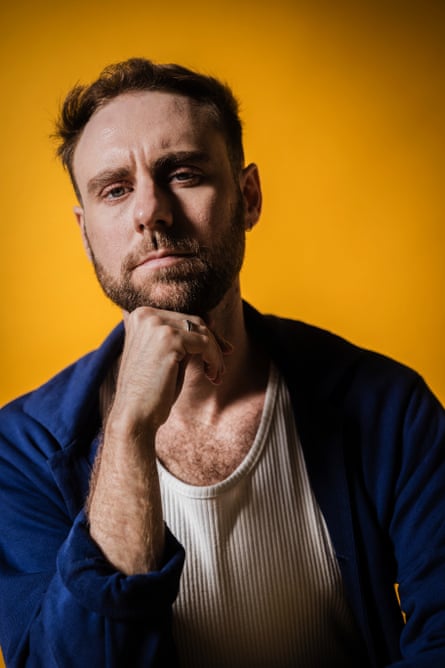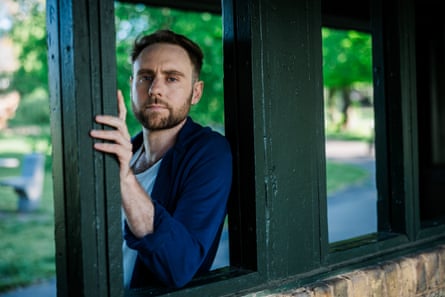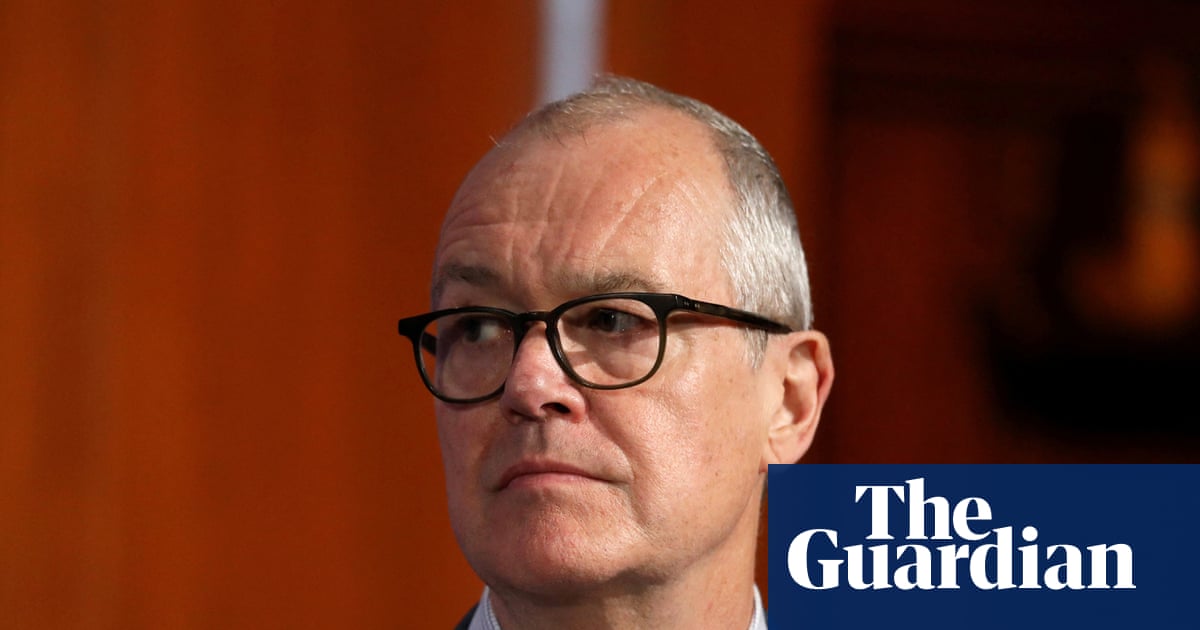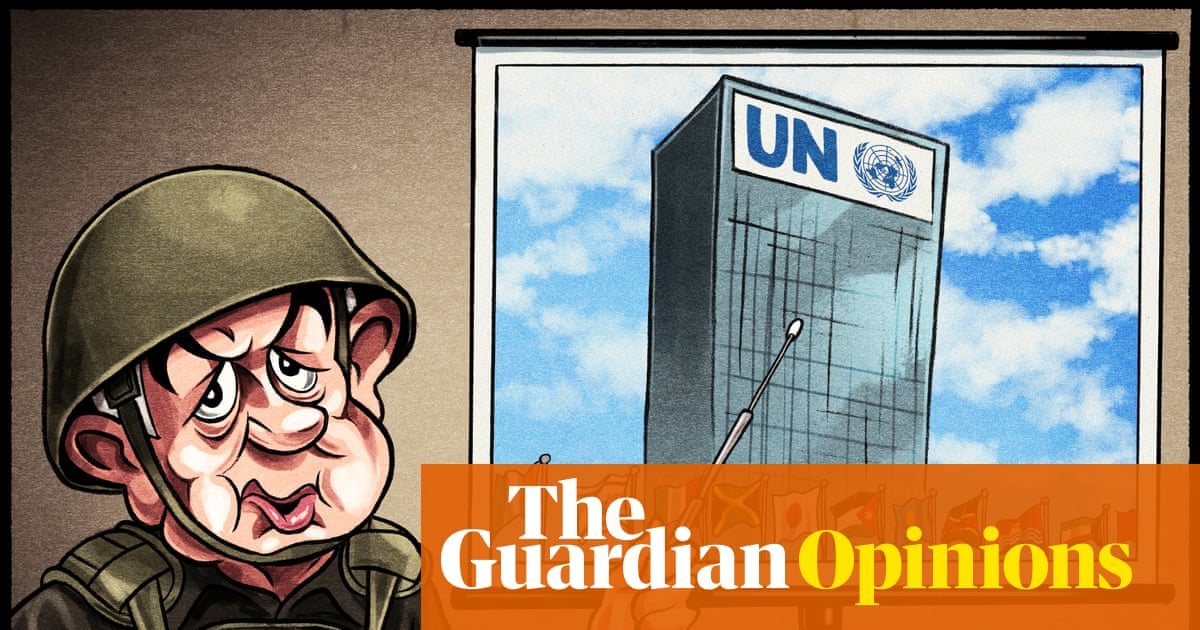Throughout my adolescence and into my mid-20s, I spent a lot of time trying to understand my body. I was unwell, that much was certain. The question of exactly what was wrong with me was one to which I applied myself studiously. I had theories, of course. Looking back, these tended to change quite frequently, and yet the fear was always the same: in short, that I was dying, that I had some dreadful and no doubt painful disease that, for all my worrying, I had carelessly allowed to reach the point at which it had become incurable.
This started at university, when I developed a headache that didn’t go away. The pain wasn’t severe, but it was constant – accompanied by a strange feeling of belatedness that told me it had already been going on for some time. How long, exactly, I couldn’t say – weeks, definitely. Maybe it had been years.
After about a month, I visited the doctor. She had an earnest, warbling, confident way of speaking, which, in spite of her evident commitment to the tenets of mainstream medicine, gave her the air of an alternative healer. She explained that what I was experiencing were tension headaches, a common ailment among students, and during exam season practically universal. I said that I didn’t feel very tense. The doctor asked whether the pain felt like a tightness across both sides of the head. A kind of squeezing? Like an elastic band being pulled tight? Like a fist clenching around your skull? I said that it did not feel like these things. Yes, she said, nodding meaningfully. Every person experiences tension differently.
The doctor asked me what medication I’d been using to manage the pain. I was thrown by this question; the thought had not occurred to me. This was, in many ways, quite surprising, since I consider my tolerance of pain to be less developed than the average. In the case of this headache, however, my attitude was edging closer to that of Franz Kafka. A century earlier, the writer told his fiancee, Felice Bauer, that he never took aspirin because doing so, he said, created “a sense of artificiality” far worse than any “natural affliction”. As Kafka explained to Bauer, if you had a headache, you had to undergo the experience of pain and treat it as a sign, before examining your entire life, right down to its most minute detail, “so as to understand where the origins of your headaches are hidden”.
The idea of taking painkillers struck me as irresponsible, even reckless, like disconnecting the fire alarm because it has interrupted your sleep. Like Kafka, I wanted to understand the headache. I wanted to know what it meant. The doctor told me to come back in a few weeks if things hadn’t got better, sooner if they got worse. I left the practice holding a bottle of aspirin, which I promptly deposited in the bin.
In the months that followed, I began using Google to research what was wrong with me. The thinking here was not unreasonable: I wanted to know what was causing the headache, so it made sense to go searching for information. The problem was that these online searches often produce a sense of disproportion: the list of 10 things that cause headaches might fail to mention that certain items account for the vast majority of cases, while others vanishingly few. And for those of us looking for trouble, our eyes tend to pass over the more prosaic – and plausible – explanations (eyestrain, dehydration or indeed tension). Only the worst will satisfy us. As the critic and Nobel laureate Elias Canetti once wrote, hypochondria is a form of angst that “seeks names and finds them”.

Predictably, I arrived at the conclusion that I had a brain tumour – an interpretation for which my Googling provided abundant evidence. As I trawled through lists of symptoms, more and more aspects of experience came to fall under my conscious scrutiny. Soon I was noticing lots of other little anomalies. I became forgetful; words kept escaping me. At the same time, I seemed to be walking around in a continual state of deja vu. I developed a twitch in my left eye. One pupil became slightly larger than the other, and coffee started tasting weird and metallic. I developed a mild but persistent case of the hiccups; just one, two, maybe three solitary little hiccups each day.
“Can hiccups be caused by brain cancer?” I asked Google. Yes, it answered – if it is advanced. Sometime later I started to smell things that didn’t seem to have any external source. Burning, usually. Other times an astringent, chemical smell. One morning I woke up and my nostrils were filled with the indescribable scent of the villa in Spain where as a child I spent my long, dull, lovely summers.
My eyesight, which had always been perfect, began to flare at the edges, as though there were always something flickering just outside my field of vision. I would turn suddenly, trying to catch it, at which point it would cease, recommencing as soon as I turned back around.
I started keeping a list of all these things as they arose, on a loose sheet of paper headed “symptoms”. Reading back over that list, it seemed to resemble the descriptions of illnesses that I browsed online. The doctor, however, took a different view – and the greater my fear that I was seriously unwell, the more she became convinced that my headache was being caused by “tension”.
In her recent book The Invisible Kingdom, Meghan O’Rourke writes about suffering from an undiagnosed autoimmune illness, an experience she describes as “living at the edge of medical knowledge”. She writes: “What really terrified me was the conviction that … I would never have partners in my search for answers – and treatments. How could I get better if no one thought I was sick?” O’Rourke is pointing out that diagnosis starts with a conversation between a patient and their doctor. There are important questions here about privilege: about who is and isn’t deemed to be a reliable narrator of their own experience. Studies have shown that women are less likely to be believed by their doctors than men, and black women are less likely to be believed than white women. But, for everyone, conversations with the doctor are constrained by the need to appear credible – and if you are hoping to get a referral for medical testing, this might mean being careful to avoid seeming too anxious.
In a desire to economise on my trips to the doctor, I would sometimes seek alternative paths to diagnosis. On several occasions, I visited the optician, because I knew they would use an ophthalmoscope to examine my optic nerve, which, I had learned online, might be inflamed due to the increased pressure inside my skull if I did have a tumour. (In the end, this did result in a diagnosis – one that, come to think of it, was rather apt: myopia.)
On the occasions when I did visit the doctor, I was always very careful to limit what I said, not wishing to appear like one of those “knowledgable” patients, a hypochondriac, who turns up requesting a second opinion on a diagnosis that they themselves have made.
‘The position of hypochondria is still suspended in darkness,” declared Sigmund Freud in 1909. His colleagues wanted to make a publication celebrating the achievements of their new science, but Freud was cool, arguing they would have to be honest about what he called “the limits of our knowledge”.
For millennia, hypochondria has confounded patients and doctors alike. It first appears in the writings of the ancient Greek physician Hippocrates, and then in those of the Roman physician Galen. According to these accounts, hypochondria was a subspecies of melancholy, which was caused by an excess of one of the four humours, black bile. This meant it was a physical disease, seated in the abdomen, though it could cause an array of mental symptoms such as fear and sorrow.
This view remained more or less unchallenged for many centuries. Then, in the 18th century – with the waning authority of humoral medicine – hypochondria was redescribed as a nervous illness with a set of symptoms that spanned mind and body. It was often considered to be a peculiarly male disease: a counterpart to the hysteria that was said to affect women. Having long been considered a “scholar’s disease”, it became a fashionable ailment among an urban literati, with eminent sufferers including Samuel Johnson and James Boswell. During this period, several books such as Samuel-Auguste Tissot’s An Essay on Diseases Incidental to Literary and Sedentary Persons (1768) warned of the consequences of reckless and excessive reading.
This trend accelerated in the 19th century with the emergence of a genre of popular medical manuals. A Victorian physician was expressing the view of his profession when he decried the spread of “pernicious books of ‘popular medicine’”, adding that there is “no doubt that the reading of this kind of literature has often resulted in an attack of hypochondriasis”. As more and more people were reading about health and sickness, hypochondria settled into its current meaning: a fear of illness that is also a form of illness.
after newsletter promotion
By the time I came to worry about my health, attention had been turned towards the internet, with some doctors speaking about the rise of a worrying new scourge: “cyberchondria”. And for anyone who fears they may be suffering from this disorder, Dr Google promises to step in to help: “5 Ways to Tell If You Have Cyberchondria” (Psychology Today); “15 Signs You’re a Cyberchondriac” (Yahoo). (One sign is “you assume that the first result is the most plausible explanation”; another is “you trust the internet more than your doctor”.)
At the heart of hypochondria is the fact that it’s impossible to really know what’s going on inside your body. A person can “feel well … but he can never know that he is healthy”, Immanuel Kant wrote in 1798. Today, medical websites, with their lists of the seemingly innocuous “warning signs” of serious illness, have grown into multimillion-dollar businesses by publicising this potential gap between reality and perception – between how well you might feel, and how sick you might be.
More than a year after the headache started, I was referred to a neurologist. The referral was made reluctantly, with a mixture of sympathy and contempt. The neurologist sent me for an MRI. A few weeks later a letter arrived. In its entirety, it read: “Dear Mr Rees, your brain is reported as normal.” Over time the other symptoms started to disappear.
But that was not the end of things. Up late one night, I found myself looking into error rates within radiology. Across all areas, it’s about 3-5%. This was not that bad, I thought. Then I Googled the number of annual radiology scans in the UK; that year it was about 40m. If 4% of those were wrong, this amounted to 1.6m incorrect scans – a number, I reasoned, that was certainly large enough to include me. In a study of those diagnosed with a lung carcinoma, the lesion could retrospectively be found in 90% of “negative” scans.
After a brief, ecstatic period of reprieve, my fears came back. At some point I forgot my headaches and directed my attention towards the lymph nodes in my neck, which I nervously fingered as though they were rosary beads. Once again, I was sure there was something seriously wrong with me – and, as I sought to get to the bottom of things, I found myself trapped in the same cycle of recovery and relapse.
If hypochondria is a need to know, then no test is likely to offer a definitive cure. Ultimately, one has to learn to make peace with uncertainty. Perhaps this is what Freud meant when he said that hypochondria exposes the limits of our knowledge. Not simply a gap that could be filled with new information, but a more categorical deficiency: the failure of knowledge to ever bring about the states of health and happiness or even certainty we desire.

I’m not really sure how I came to stop worrying so much about my health. After nearly a decade of anxiety, in my mid-20s I simply ceased to give it much thought. It is probably fair to say I’ve overcorrected. A couple of years ago, when I woke up in a state of extreme allergic response (shortness of breath, dizziness, eyes swollen shut), I took a hay fever tablet and tried go to work. Luckily, my partner convinced me to go to A&E, where I was immediately given a shot of steroids. The poet Anne Boyer has written about what she calls “reverse hypochondria”, and I suppose I have joined these ranks.
I think writing about hypochondria helped. Reading about the fears of others – writers such as Kafka, Marcel Proust with his extreme sensitivity, and Alice James with her wavering and debilitating symptoms – was strangely comforting and helped to keep my own fears under control. Besides, researching and writing a book is a sort of apprenticeship in uncertainty: finishing it required me to give up my fantasies of fully understanding the topic.
The NHS’s standard treatment for health anxiety consists of cognitive behavioural therapy. Some people report being helped by CBT, but it’s never really interested me. By the time I started psychoanalysis at the age of 30, my fears had been more or less put to rest. But I think it would have been helpful back at the height of my hypochondria. One thing I enjoy about conversations with my analyst is how they generally make me less certain about my version of events – the way they loosen me, in an undramatic and indefinitive way, from my attachment to my own narratives. And so I can’t help but feel this would have been good then, back when I only had one story to tell: the story of my illness.

 3 months ago
122
3 months ago
122

















































